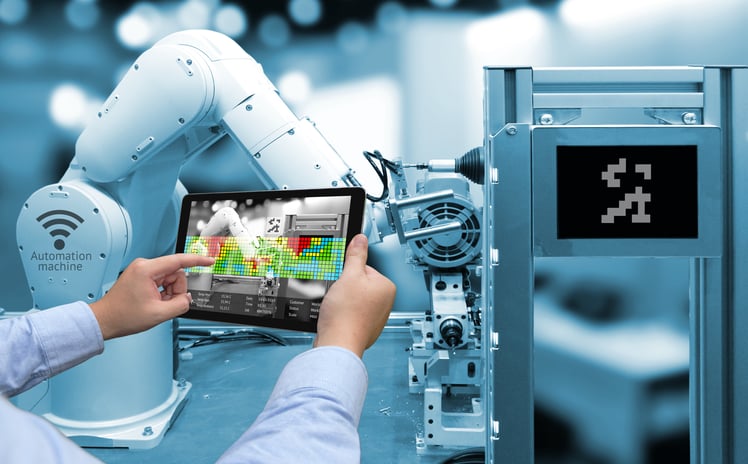September 5, 2017 | Smart Manufacturing, Robotics & Automation
Are You Losing Money by not Implementing SMART Manufacturing?

We live in an era of smartphones, smart homes, smart watches, smart refrigerators, robots, self-driving cars, and the list goes on and on. Smart Manufacturing (SM) is a concept that uses the convergence of real-time data acquisition and analytics with technology to improve the overall effectiveness of the factory network.
Real-time data, better analytics, and interconnected smart machines give managers more insight into core processes on the shop floor -- events that can make all the difference in their efforts to increase efficiency and quality while saving on costs. Put simply, smart manufacturing means smarter machines, smarter processes, smarter factories, and smarter products, which results in money saved.
In this article, we're going to take a deeper dive into the how:
Why Companies Not Implementing SM Stand to Lose Money
SM allows for greater visibility on the real workings and efficiencies on the shop floor
In the not too distant past, for example, maintaining aircraft engines was based on a trial-and-error method by analyzing how frequently engines failed and incorporating a preventive maintenance cycle. Maintenance crews had to wait for engines to fail and then fix them; a process that, by today's standards, is less than optimal.
Today, sensors can provide considerable data about aircraft engines, and software can more precisely determine what type of maintenance engines need, as well as the required frequency. Smart machines and their ability to learn makes them able to harness big data and analyze it in a highly sophisticated manner – much better than humans can.
Managers can then be alerted to inefficiencies and other issues that can be costly to business. SM systems, thus, provide greater visibility to important data and maintenance, a key driver of ROI. Manufacturers that fail to realize this benefit of SM stand to lose money.
Affordable access to new technology and innovation saves time and cost
An essential aspect of SM is the ability of SM adopters to scale IT infrastructure and software use to drive down costs. Small and medium-sized manufacturers can make changes more easily, rather than be restricted to conventional software or be forced to buy new legacy software that adds to IT costs.
Among other technologies, sensors can capture real-time information (better than humans directly) from the shop floor which can then be automatically relayed to data analytics tools for resolution. Manufacturers who choose to stick to traditional monitoring systems are bound to lose money on labor costs and wasted time.
Robotics is also gaining ground because industrial robots can complete tasks in extreme environments without risking human injury. For instance, heat-resistant welding robots can work in environments with extreme heat.
SM adoption is a challenge to small and medium-sized manufacturers because the associated costs make it difficult for them to acquire all of the necessary capabilities to implement SM. The good news is that the Smart Manufacturing Leadership Coalition (SMLC) is developing an Open Smart Manufacturing Platform that will interface with open source technologies to provide countless opportunities for innovation and competitiveness among all participating manufacturers.
Smart manufacturing enhances the efficient use of resources to optimize costs
With the growing complexity of manufacturing processes, companies find themselves under increased pressure to reduce costs, while simultaneously improving quality and efficiency. SM helps manufacturing executives better manage their manufacturing assets by optimizing processes, workforce, and inventory levels. SMLC estimates the potential impact of SM systems on savings as follows:
- 80% reduction in modeling and simulation cost
- 40% reduction in cycle times
- 40% reduction in water usage
- 25% improvement in energy efficiency
- 25% reduction in safety incidents
- 10% improvement in overall operating efficiency
Companies that are skeptical about implementing SM miss out on these cost-saving benefits, potentially losing considerable money along the way.
The Future of Smart Manufacturing
The United States is not the only country investing in advanced manufacturing, but it remains a top SM trendsetter. There are some drivers in the advancement of SM systems: Industrial Internet of Things (or the connectivity of devices and applications), cloud computing, the ubiquity of the Internet, and of course, the manufacturing supply chain.
The biggest change in the value chain is not in technology but in people. If the commitment of all team members is not locked into the necessary changes that need to be implemented, companies may have a difficult time realizing the benefits and cost savings of integrating advanced technology and smart machines.

